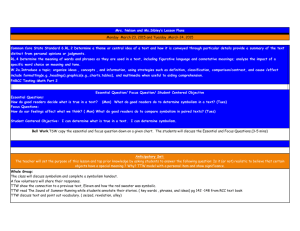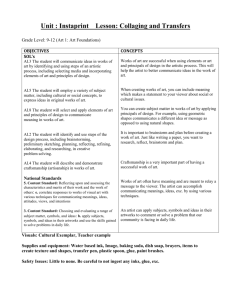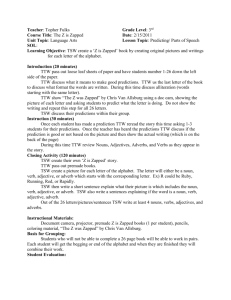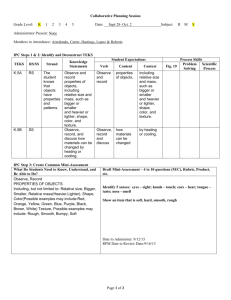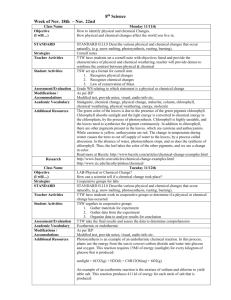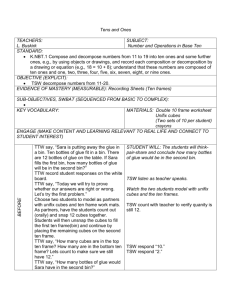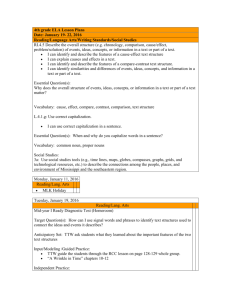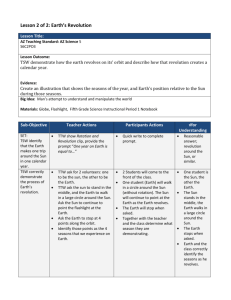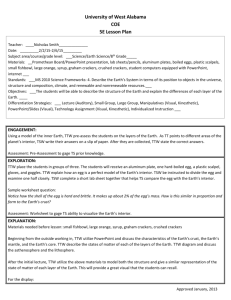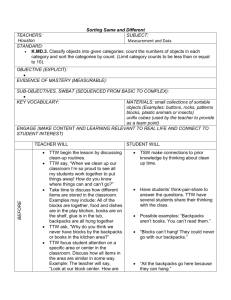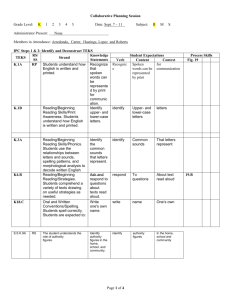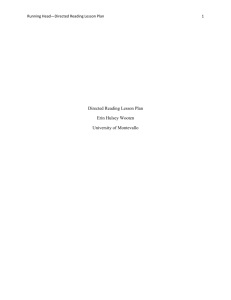K.CC_.3 Ziggy`s Number Symbols Lesson Plan
advertisement
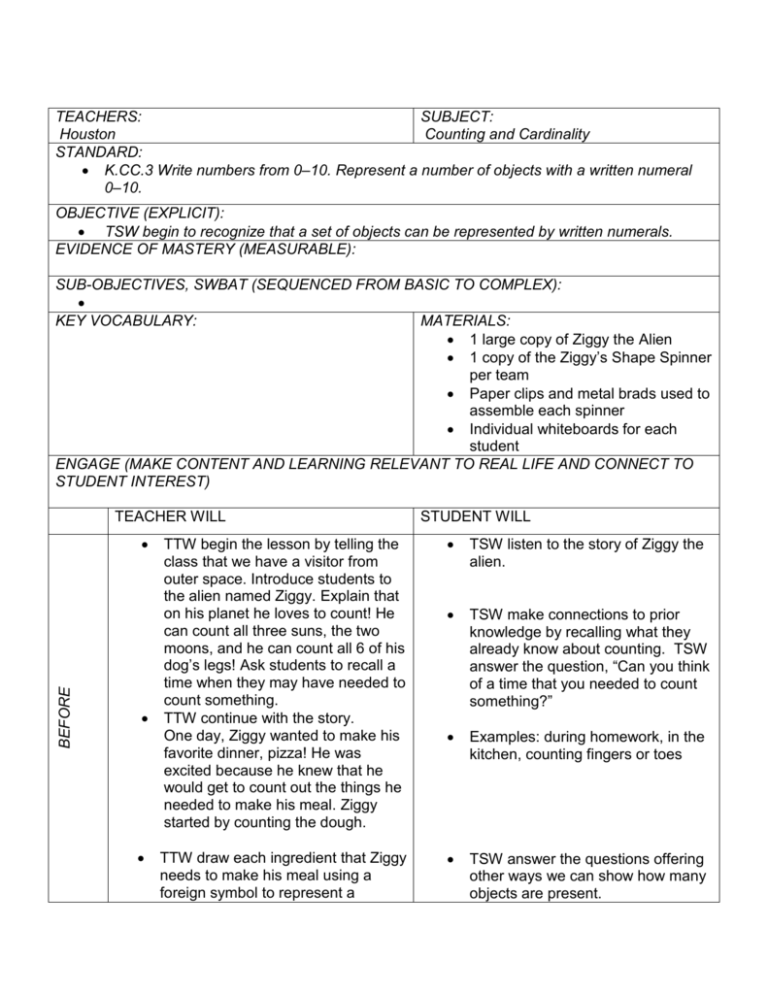
TEACHERS: SUBJECT: Houston Counting and Cardinality STANDARD: K.CC.3 Write numbers from 0–10. Represent a number of objects with a written numeral 0–10. OBJECTIVE (EXPLICIT): TSW begin to recognize that a set of objects can be represented by written numerals. EVIDENCE OF MASTERY (MEASURABLE): SUB-OBJECTIVES, SWBAT (SEQUENCED FROM BASIC TO COMPLEX): KEY VOCABULARY: MATERIALS: 1 large copy of Ziggy the Alien 1 copy of the Ziggy’s Shape Spinner per team Paper clips and metal brads used to assemble each spinner Individual whiteboards for each student ENGAGE (MAKE CONTENT AND LEARNING RELEVANT TO REAL LIFE AND CONNECT TO STUDENT INTEREST) TEACHER WILL BEFORE STUDENT WILL TTW begin the lesson by telling the class that we have a visitor from outer space. Introduce students to the alien named Ziggy. Explain that on his planet he loves to count! He can count all three suns, the two moons, and he can count all 6 of his dog’s legs! Ask students to recall a time when they may have needed to count something. TTW continue with the story. One day, Ziggy wanted to make his favorite dinner, pizza! He was excited because he knew that he would get to count out the things he needed to make his meal. Ziggy started by counting the dough. TSW listen to the story of Ziggy the alien. TSW make connections to prior knowledge by recalling what they already know about counting. TSW answer the question, “Can you think of a time that you needed to count something?” Examples: during homework, in the kitchen, counting fingers or toes TTW draw each ingredient that Ziggy needs to make his meal using a foreign symbol to represent a TSW answer the questions offering other ways we can show how many objects are present. numeral from another planet. For example, TTW draw a large round symbol to represent the dough. Next to it, the teacher will draw a random symbol and explain to the class that it represents (1) on Ziggy’s planet. TTW ask, “Is that how we show one on our planet? Does anyone know of something we use on our planet to show how many objects we have?” TTW draw five small circles to represent pepperoni. Next to them, the teacher will draw a random symbol and tell the class it represents (5) on Ziggy’s planet. TTW repeat the same questions asked earlier. TTW draw four mushroom slices. Next to them, the teacher will draw a random symbol and tell the class it represents (4) on Ziggy’s planet. TTW explain that now, we will be playing one of Ziggy’s favorite games called Shape Counting. TTW ask two students to demonstrate how to play the game. The class will watch the children model how to play the game. TSW take turns spinning the spinner, counting objects, and writing the correct numeral. Player 1 will spin the spinner. Both players count the number of shapes seen. Player 2 writes a numeral (from our planet) on their whiteboard. The players switch roles and repeat. CO-TEACHING STRATEGY IF APPLICABLE DURING TTW move from group to group monitoring for understanding. The teacher may ask, “How many shapes did you count?” “How did you know what to write after counting all the shapes?” “Why are numbers important?” What do the numbers mean to us?” “How do you know you counted correctly?” CO-TEACHING STRATEGY IF APPLICABLE AFTER TTW ask the class, “What did you discover during our activity today?” “What do we use on our planet to show how many objects we have?” Ending Question: TTW ask several children to come to the front of the class. TSW count their classmates and write the correct numeral on their white boards. Example: TTW ask three children to stand in the front of the class. TTW ask, “What can you write to show how many children are standing in the front of the room?” TSW write the numeral 3. Repeat. CO-TEACHING STRATEGY IF APPLICABLE TSW orally summarize their observations. TSW use their individual whiteboards to write the correct numeral to represent a set of objects.
